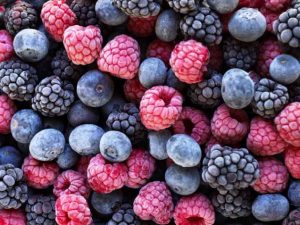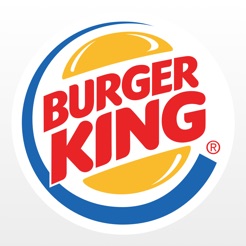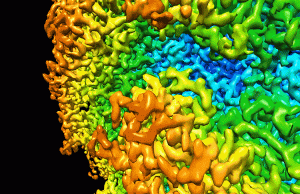When someone says a blue-ribbon panel summarized results on the prevention of foodborne Cyclospora outbreaks, I think blue-ribbons is talking about jams or Holsteins at county fairs.
She was sick for weeks.
On June 12, 1996, Ontario’s chief medical officer, Dr. Richard Schabas, issued a public health advisory on the presumed link between consumption of California strawberries and an outbreak of diarrheal illness among some 40 people in the Metro Toronto area. The announcement followed a similar statement from the Department of Health and Human Services in Houston, Texas, who were investigating a cluster of 18 cases of Cyclospora illness among oil executives.
She was sick for weeks.
It’s the fog of outbreaks..
Like the fog my daughter played in last Sat. at the Gold Coast.
On June 12, 1996, Ontario’s chief medical officer, Dr. Richard Schabas, issued a public health advisory on the presumed link between consumption of California strawberries and an outbreak of diarrheal illness among some 40 people in the Metro Toronto area. The announcement followed a similar statement from the Department of Health and Human Services in Houston, Texas, who were investigating a cluster of 18 cases of Cyclospora illness among oil executives.
Dr. Schabas advised consumers to wash California berries “very carefully” before eating them, and recommended that people with compromised immune systems avoid them entirely. He also stated that Ontario strawberries, which were just beginning to be harvested, were safe for consumption. Almost immediately, people in Ontario stopped buying strawberries. Two supermarket chains took California berries off their shelves, in response to pressure from consumers. The market collapsed so thoroughly that newspapers reported truck drivers headed for Toronto with loads of berries being directed, by telephone, to other markets.
However, by June 20, 1996, discrepancies began to appear in the link between California strawberries and illness caused by the parasite, Cyclospora, even though the number of reported illnesses continued to increase across North America. Texas health officials strengthened their assertion that California strawberries were the cause of the outbreak, while scientists at the U.S. Centers for Disease Control and Prevention (CDC) and the Food and Drug Administration (FDA) said there were not yet ready to identify a food vehicle for the outbreak. On June 27, 1996, the New York City Health Department became the first in North America to publicly state that raspberries were also suspected in the outbreak of Cyclospora.
By July 18, 1996, the CDC declared that raspberries from Guatemala — which had been sprayed with pesticides mixed with water that could have been contaminated with human sewage containing Cyclospora — were the likely source of the Cyclospora outbreak, which ultimately sickened about 1,000 people across North America. Guatemalan health authorities and producers have vigorously refuted the charges. The California Strawberry Commission estimates it lost $15 million to $20 million in reduced strawberry sales.
Cyclospora cayetanensis is a recently characterised coccidian parasite; the first known cases of infection in humans were diagnosed in 1977. Before 1996, only three outbreaks of Cyclospora infection had been reported in the United States. Cyclospora is normally associated with warm, Latin American countries with poor sanitation.
One reason for the large amount of uncertainty in the 1996 Cyclospora outbreak is the lack of effective testing procedures for this organism. To date, Cyclospora oocysts have not been found on any strawberries, raspberries or other fruit, either from North America or Guatemala. That does not mean that cyclospora was absent; it means the tests are unreliable and somewhat meaningless. FDA, CDC and others are developing standardized methods for such testing and are currently evaluating their sensitivity.
 The initial, and subsequent, links between Cyclospora and strawberries or raspberries were therefore based on epidemiology, a statistical association between consumption of a particular food and the onset of disease. For example, the Toronto outbreak was first identified because some 35 guests attending a May 11, 1996 wedding reception developed the same severe, intestinal illness, seven to 10 days after the wedding, and subsequently tested positive for cyclospora. Based on interviews with those stricken, health authorities in Toronto and Texas concluded that California strawberries were the most likely source. However, attempts to remember exactly what one ate two weeks earlier is an extremely difficult task; and larger foods, like strawberries, are recalled more frequently than smaller foods, like raspberries. Ontario strawberries were never implicated in the outbreak.
The initial, and subsequent, links between Cyclospora and strawberries or raspberries were therefore based on epidemiology, a statistical association between consumption of a particular food and the onset of disease. For example, the Toronto outbreak was first identified because some 35 guests attending a May 11, 1996 wedding reception developed the same severe, intestinal illness, seven to 10 days after the wedding, and subsequently tested positive for cyclospora. Based on interviews with those stricken, health authorities in Toronto and Texas concluded that California strawberries were the most likely source. However, attempts to remember exactly what one ate two weeks earlier is an extremely difficult task; and larger foods, like strawberries, are recalled more frequently than smaller foods, like raspberries. Ontario strawberries were never implicated in the outbreak.
Once epidemiology identifies a probable link, health officials have to decide whether it makes sense to warn the public. In retrospect, the decision seems straightforward, but there are several possibilities that must be weighed at the time. If the Ontario Ministry of Health decided to warn people that eating imported strawberries might be connected to Cyclospora infection, two outcomes were possible: if it turned out that strawberries are implicated, the ministry has made a smart decision, warning people against something that could hurt them; if strawberries were not implicated, then the ministry has made a bad decision with the result that strawberry growers and sellers will lose money and people will stop eating something that is good for them. If the ministry decides not to warn people, another two outcomes are possible: if strawberries were implicated, then the ministry has made a bad decision and people may get a parasitic infection they would have avoided had they been given the information (lawsuits usually follow); if strawberries were definitely not implicated then nothing happens, the industry does not suffer and the ministry does not get in trouble for not telling people. Research is currently being undertaken to develop more rigorous, scientifically-tested guidelines for informing the public of uncertain risks.
But in Sarnia (Ontario, Canada) they got a lot of sick people who attended the Big Sisters of Sarnia-Lambton Chef’s Challenge on May 12, 2010.
Michael T. Osterholm, PhD, who has a lot of titles and once called me at 5 a.m. to tell me I was an asshole (maybe not the exact words, but the sentiment) and chair of the Holstein Blue-Ribbon Panel on the Prevention of Foodborne Cyclospora Outbreaks writes that the 1996 cyclosporiasis outbreak in the United States and Canada associated with the late spring harvest of imported Guatemalan-produced raspberries was an early warning to public health officials and the produce industry that the international sourcing of produce means that infectious agents once thought of as only causing traveler’s diarrhea could now infect at home. The public health investigation of the 1996 outbreak couldn’t identify how, when, where, or why the berries became contaminated with Cyclospora cayetanensis.
The investigation results were published in the New England Journal of Medicine in 1997. I was asked to write an editorial to accompany the investigation report.2 In my editorial, I noted the unknowns surrounding the C. cayetanensis contamination. The 1997 spring harvest of Guatemalan raspberries was allowed to be imported into both the United States and Canada—and again, a large outbreak of cyclosporiasis occurred. As in the 1996 outbreak, no source for the contamination of berries was found. Later in 1997, the Food and Drug Administration (FDA) prohibited the importation of future spring harvests of Guatemalan raspberries until a cause for the contamination could be demonstrated and corrective actions taken. While the FDA did not permit the 1998 importation of the raspberries into the United States, the berries continued to be available in Canada. Outbreaks linked to raspberries occurred in Ontario in May 1998. When the U.S. Centers for Disease Control and Prevention (CDC)-led investigative team published its 1997 outbreak findings in the Annals of Internal Medicine, 3 I was again asked to write an accompanying editorial.4 As I had done in my previous editorial, I highlighted how little we know about the factors associated with the transmission Cyclospora on produce and how to prevent it.
Unfortunately, the state of the art for preventing foodborne, produce-associated cyclosporiasis had changed little since the 1996 outbreak despite the relatively frequent occurrence of such outbreaks.
Thirty-two years after that first Guatemalan raspberry-associated outbreak — and a year after produce-associated cyclosporiasis outbreaks that were linked to U.S.-grown produce — we have taken a major step forward in our understanding of these outbreaks and how to prevent them. After Fresh Express produce was identified in one of the 2018 outbreaks, I was asked by the company leadership to bring together the best minds’ around all aspects of produceassociated cyclosporiasis. The goal was to establish a Blue-Ribbon Panel to summarize state-of-the-art advancements regarding this public health challenge and to identify immediate steps that the produce industry and regulators can take to prevent future outbreaks. The panel was also formed to determine what immediate steps can be taken for any future outbreaks to expedite the scientific investigation to prevent further cases and inform public health officials. The Blue-Ribbon Panel comprises 11 individuals with expertise in the biology of Cyclospora; the epidemiology of cyclosporiasis, including outbreak investigation; laboratory methods for identifying C. cayetanensis in human and food samples and the environment; and produce production. In addition,16 expert consultants from academia, federal and state public health agencies (including expert observers from the FDA, CDC, U.S. Department of Agriculture, and California Department of Public Health), and industry, including producers and professional trade association science experts. The collaboration and comprehensiveness of this effort was remarkable. Many hundreds of hours of meetings and conference calls took place to determine our findings and establish our recommendations.
This document, “Interim Report: Blue-Ribbon Panel on the Prevention of Cyclospora Outbreaks in the Food Supply,” summarizes the state-of-the art practices for the prevention of C. cayetanensis contamination of produce and priorities for research that will inform us as we strive to further reduce infection risk. Also, we make recommendations on how to more quickly identify and more effectively respond to produce-associated outbreaks when they occur. We greatly appreciate all the organizations represented on the panel and the expert consultants. The report does not, however, represent the official policy or recommendations of any other private, academic, trade association or federal or state government agency. Fresh Express has committed to continuing the Blue-Ribbon Panel process for as long as it can provide critical and actionable information to prevent and control Cyclospora outbreaks in the food supply.
| Table: Summary of U.S. foodborne outbreaks of cyclosporiasis, 2000–2017 | ||||
| Year(s)* | Month(s)* | Jurisdiction(s)* | No. of cases† | Food vehicle and source, if identified‡ |
| 2000 | May | Georgia | 19 | Raspberries and/or blackberries (suspected) |
| 2000 | June | Pennsylvania | 54 | Raspberries |
| 2001 | January–February | Florida | 39 | |
| 2001 | January | New York City | 3 | |
| 2001–02 | December–January | Vermont | 22 | Raspberries (likely) |
| 2002 | April–May | Massachusetts | 8 | |
| 2002 | June | New York | 14 | |
| 2004 | February | Texas | 38 | |
| 2004 | February | Illinois | 57 | Basil (likely) |
| 2004 | May | Tennessee | 12 | |
| 2004 | May–June | Pennsylvania | 96 | Snow peas from Guatemala ⁂ |
| 2005 | March–May | Florida | 582 ¶ | Basil from Peru |
| 2005 | May | South Carolina | 6 | |
| 2005 | April | Massachusetts | 58 | |
| 2005 | May | Massachusetts | 16 | |
| 2005 | June | Connecticut | 30 | Basil (suspected) |
| 2006 | June | Minnesota | 14 | |
| 2006 | June | New York | 20 | |
| 2006 | July | Georgia | 3 | |
| 2008 | March | Wisconsin | 4 | Sugar snap peas (likely) ⁂ |
| 2008 | July | California | 45 ¶ | Raspberries and/or blackberries (likely) |
| 2009 | June | District of Columbia | 34 | |
| 2011 | June | Florida | 12 | |
| 2011 | July | Georgia | 88** | |
| 2012 | June–July | Texas | 16 | |
| 2013†† | June | Iowa, Nebraska, and neighboring states | 162 | Bagged salad mix from Mexico |
| 2013†† | June–July | Texas | 38 | Cilantro from Mexico |
| 2013 | July | Wisconsin | 8 | Berry salad (suspected) |
| 2014 | June | Michigan | 14 | |
| 2014‡‡ | June–July | Texas | 26 | Cilantro from Mexico |
| 2014 | July | South Carolina | 13 | |
| 2015 | May–July | Georgia, Texas, and Wisconsin | 90 | Cilantro from Mexico |
| 2016 | June–July | Texas | 6¶¶ | Carrots or green cabbage (suspected) |
| 2017 | May | Florida | 6 | Berries (suspected) |
| 2017 | May–July | Texas | 38*** | Scallions (i.e., green onions) |
| 2017 | June | Michigan | 29 | |
| 2017 | June | Tennessee | 4††† | |
| 2017 | June | Connecticut | 3 | |
| 2017 | July | Florida | 3‡‡‡ | |










